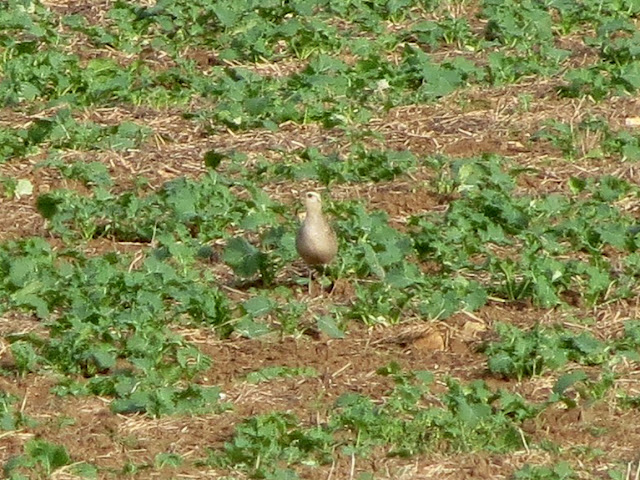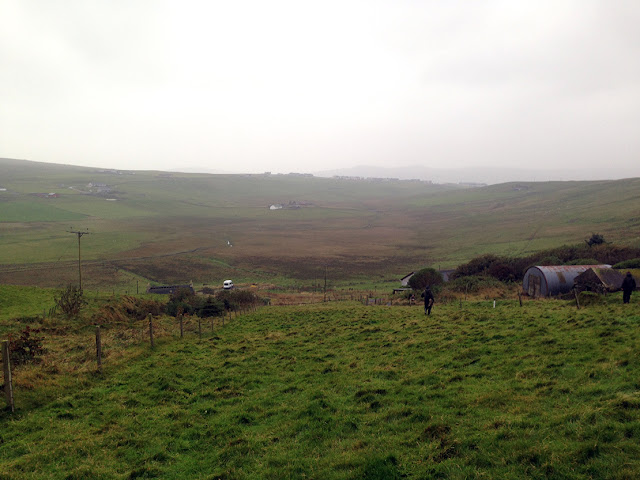News came through around 12:45 on Sunday 8th, and I left home immediately (not something I'm normally in a position to do). Chesterfield's about 1.5 hours drive away from my house; quicker when traffic is light, slower when there's a 50mph limit along most of the M1...
By time I took up my position across the road from the Church of St. Mary and All Saints and stared up at the famous crooked spire, the bird had already been gone for around 30 minutes. The light grew darker, a Sparrowhawk came looking for a meal, and the Crag Martin didn't return. Ah well, it was worth a try. And at least it wasn't my forth dip, like it was for my old young friend Chris Bromley.
Church of St. Mary and All Saints, Chesterfield, Derbyshire - Sunday 8th November 2015
Next morning I was at work, and inevitably the bird returned to the church. I hastily arranged a half-day off work, for the middle half of the day, and got to Chesterfield around 13:15. The bird hadn't been seen for half an hour, but it had been performing well then, apparently. At around 13:25 I noticed a birder from up the street pointing over my head towards some Feral Pigeons in flight. I lifted my bins just as I overheard "It's over there now" and, yes, there it was just in front of the pigeons. I quickly turned to the person nearest me, who seemed oblivious to all of this, and attempted to point out the Crag Martin (and the Feral Pigeons). I then looked back to see it go out of view behind a building after about two seconds, and it didn't show again for the rest of the day.
Practically the same time as the day before, but with far fewer birders...
Church of St. Mary and All Saints, Chesterfield, Derbyshire - Monday 9th November 2015
Um, so I'd had about five seconds of viewing of the bird, split by about ten seconds of trying and failing to get someone else on it. It certainly was the Crag Martin: a pale-ish brown martin (the paleness evident only when viewed through bins), zipping around the sky catching flies, spreading it's tail as it switched direction. The pointer, who'd triggered me to look in the right direction, told me it had appeared from behind him seconds earlier, almost landing on the church, then zipping away down the street, when he pointed.
So, yes, it was the bird. But I didn't feel massively comfortable ticking it. I did tick it, and applied the philosophy of my birder friend Mike Warner: "If you're happy it was the bird, tick it; then go and get better views of the next one at the first available opportunity". Fair enough; it was on the list.
Reportedly, the bird performed much better the day after, but then the sightings stopped for two days. It must have gone. One birder did put news out on Twitter, saying he'd seen it on Thursday morning, and got loads of grief from knee-jerk know-it-alls. He was proved right in the end - on Friday the bird was seen again, and the sighting became regular. Regular enough to make me decide that I'd go back for a another pop on Saturday morning...
Third time lucky? - Church of St. Mary and All Saints, Chesterfield, Derbyshire
Saturday 14th November 2015
Saturday 14th November 2015
My mood, and that of several birders and locals, was subdued on the morning of Saturday 14th November, because of the events in Paris the night before. It was cooler than recently, with heavy rain promised around 10:30, when I had to leave anyway.
The bird didn't show at first, which gave me time to contemplate the Paris attacks and the frankly rubbish-looking fake Christmas tree by the information centre; and a chance to chat to locals, birders, and some friends from BOG. By mid-morning, the bird hadn't arrived (and neither had the rain), so I left. My semi-dodgy tick from Monday would have to stand.
Back amongst the 50mph drudgery and traffic cones on the M1, the news came through around 11:00 that it was back. Decisions, decisions... I wasn't happy with the views on Monday, whatever I kept telling myself. I had to go back and hope it was still there, but was a good half an hour away, and still had to continue north to find junction to turn around.
I arrived around 11:40, to find the bird had been on show for 45 minutes. Had been on show. It had left five minutes earlier... Here we go again. At least I had a chance to catch up with ace photographer Paul Rowe, before the Crag Martin finally appeared. Phew!
Zipping around the church tower, mostlly on the north side, at great speed. Impossible with bins at close range, the bird would look really pale against the brickwork, then appear dark against the sky. Looking like a hirundine with slightly Starling-esque wings; its acrobatics were a joy to behold and made me appreciate the skill - or luck - that photographers had used to get such good shots. My shots of the Crag Martin were, erm, well, erm, you decide:
Crag Martin, Chesterfield, Derbyshire - Saturday 14th November 2015
Exactly. The bird performed well until my parking permit ran out and I headed home a happy man, with my life list firmly on 388.
Later that day the bird was relocated at Chesterfield FC's Proact football stadium, and it became clear it spent a lot of its time here when not at the church, and even roosted in the roof of the east stand. Amazing how a rare and visible bird can easily go missing in an urban area, despite birders and most locals being aware it was around.
The day after I was at Rodley Nature Reserve for the monthly WeBS count. Nothing out of the ordinary (apart from an adult Herring Gull, my first Patchwork Challenge point for months), though the heavy rain had caused the River Aire to flood.
Fish pass overflowing into the reedbed at Rodley NR, Leeds - Sunday 15th November 2015
Rugby pitch flooded by the access road at Rodley NR, Leeds - Sunday 15th November 2015
Farmer's field by the car park at Rodley NR, Leeds - Sunday 15th November 2015
Lots of food for the gulls in the flood water at Rodley NR, Leeds - Sunday 15th November 2015















































